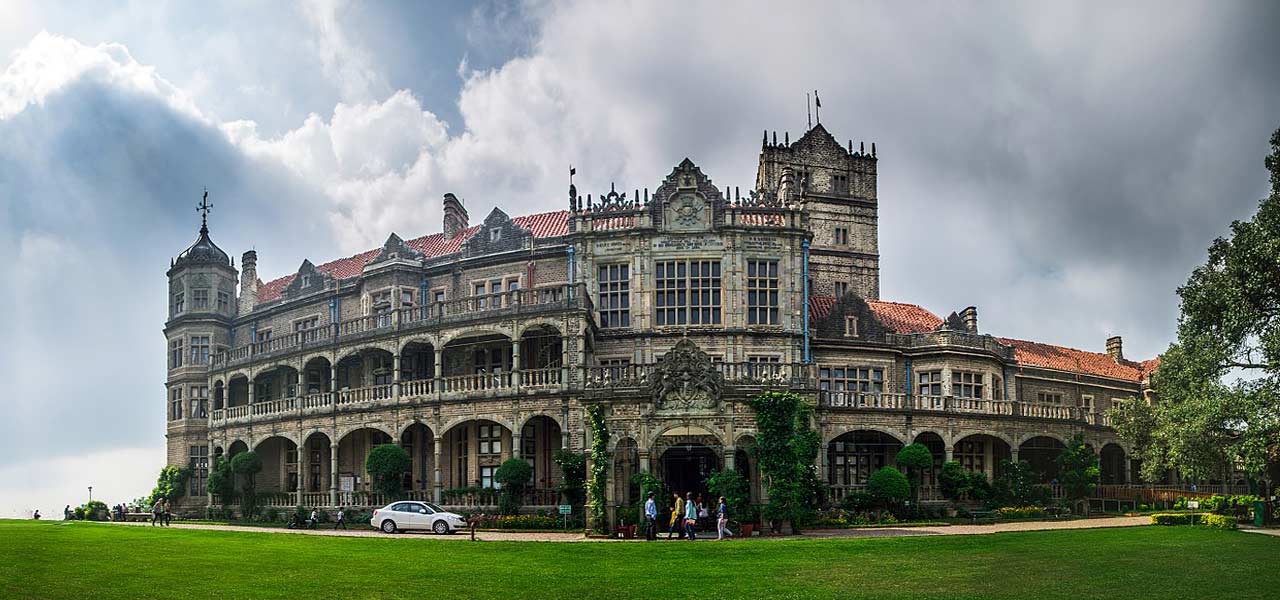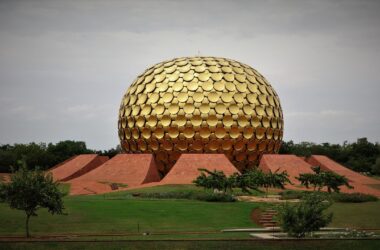Places to Visit in Shimla on a Walking Tour: Shimla, the capital of Himachal Pradesh, is one of the most popular hill stations in India and is often referred to as the “Queen of Hills”. The city flourished during the reign of the British Empire. The British began to move there in the 1820s when it was a non-described village, and by 1864 it had been declared their official summer capital. The Indian government remained there for most of the year, only relocating to Kolkata (Calcutta) and later to Delhi during the colder months. Hence, Shimla has an interesting history and a distinctive atmosphere of grandeur about it, with many well-preserved historical buildings.
From 50 households in 1830, Shimla has now grown to a population of about 350,000 people. The city stretches along a ridge, making it perfect for exploring on foot. At one end is the Viceregal Lodge, and at the other end is the main square. The route passes through Shimla’s heritage zone, which houses hundreds of prominent classic buildings and houses.
Shimla Walk organizes a special heritage zone walking tour. The journey lasts for four to five hours. It costs Rs 3,000 for one to four people and Rs 500 for each additional person.
It is possible to see Shimla alone, but if you are interested in the history of the city, a guide is invaluable. In this article, you will learn about some of the places included in the walking tour.
6 Historical Places to Visit in Shimla on a Walking Tour
- Viceregal Lodge (Rashtrapati Niwas)
Situated at the western end of the Ridge on Observatory Hill (one of the seven hills of Shimla), the magnificent Gothic Viceregal Lodge is Shimla’s most impressive-looking heritage building. Completed in 1888, it was designed by Irish-born architect Henry Irwin, whose other works include the Mysore Palace and the Chennai Railway Terminus. Only the best quality stone was used in its construction, which was carried by mules from Kalka.
The Viceregal Lodge was built for Lord Dufferin, the Viceroy of India from 1884–1888, but he only stayed in it for a few months before being moved. Along with the lavish parties, several important discussions took place at the lodge, including the partition of India and the independence of India.
After independence, the lodge became the summer retreat of the President of India, until it was decided to put it into academic use. It was transferred to the Ministry of Education and then handed over to the Indian Institute of Advanced Study, which is still occupying it.
The public is free to walk around the grounds and take a guided tour of the designated rooms inside (unfortunately, the interior is nowhere near as luxurious as the exterior!). There are many photographs, antiques, and other items on display that date back to the time of British rule.
The building also has an interesting fire system. Wax-covered pipes are attached to water tanks. The heat of the fire will melt the wax and enable the flow of water to extinguish it.
- Oberoi Cecil Hotel
The Oberoi Group is considered one of the finest luxury hotels in India, and it all started in the Cecil, Shimla on the Mall Road. Like other major historical buildings of Shimla, its history is also remarkable.
The hotel was originally a modest single-story house called Tendril Cottage, built-in 1868. It was occupied by the famous writer Rudyard Kipling when he came to Shimla in 1883 and was later developed into a hotel in 1902. Called the Cecil Hotel of Faleti, it was a landmark in Asia and known as “the finest hotel in the East”.
It was there that the late Mr. Rai Bahadur Mohan Singh Oberoi, the founder of the Oberoi Group, came in 1922 in search of employment and his fortune. Apparently, he was kicked out of the hotel. However, instead of giving up, he waited several hours until the general manager arrived and then asked him for a job. Because of her excellent grooming, the general manager appointed her as a front desk clerk.
Mr. Oberoi rose through the ranks displaying integrity, hard work, and impressive business acumen. After briefly managing the Clarks Hotel, the English owner was so pleased with his performance that he sold the hotel to him upon his return to England in 1934. Later, Mr. Oberoi bought shares in Associated Hotels of India, which was owned by The Cecil. He gained a controlling interest in the company in 1944 and became the first Indian to run the country’s finest hotel chain.
After closing in 1984 for extensive renovations, Cecil reopened in 1997. One of its features is Shimla’s only temperature-controlled swimming pool, which has stunning valley views.
- Himachal Pradesh Legislative Assembly (Vidhan Sabha)
The Himachal Pradesh Legislative Assembly is known as the Parishad Chamber. One of the last significant buildings built by the British, it was completed and inaugurated in 1925.
The building changed hands several times after India’s independence, and a part of it was also used to accommodate All India Radio. When the Legislature was revived in 1963, it was restored to its original function.
- Annadale Ground
This picturesque oval was originally the social playground of the blooming British population of Shimla. It came into existence in 1830, when about 600-800 Englishmen lived in Shimla, and it was here that they held all their public events.
The grounds were named Annadale (now commonly misspelled as Annadale) by Captain Kennedy, who built the first double-story house in Shimla in 1922. Apparently, Anna is the name of a young lady he was attracted to in his youth. “Del” means “valley”.
The land was leased to the Indian Army in 1941 to be used for a training camp during World War II. However, after the expiry of the Army lease in 1982, the control of the land between the Himachal Pradesh State Government and the Indian Army has become a serious issue of dispute.
These days, Annadale has an army museum (closed Mondays), a golf course, and a helipad.
- Shimla Railway Board Building
Shimla Railway Board building constructed in 1896 was the first building of its kind in India. Made primarily of cast iron and steel, it was designed to be fire-resistant. The material was imported from Glasgow, Scotland, and assembled in Bombay (Mumbai) by Richardson and Cruddas.
The building’s security-focused architecture served its purpose when a fire broke out on the top floor in February 2001 and its structure was not damaged.
The building currently houses several government offices, including the police department.
- Shimla Main Square
The center of Shimla, Main Chowk is where the Shimla Summer Festival is held in June. It has been a regular event since the 1960s.
The most recognized landmark in the area is the cream-colored Christ Church. It was built in the Elizabethan Neo-Gothic style and was completed in 1857. It is the second oldest church in North India, with the oldest being St John’s in Meerut (completed in 1821). The church’s stained glass windows were designed upon invitation by Rudyard Kipling’s father, an acclaimed art teacher, and painter.
Also in the vicinity are the State Library with its mock Tudor architecture, bandstand, Gaiety Theatre, Town Hall, and Scandal Point.
Important Links
- Shimla weather (Link)
- Shimla temperature (Link)
- Delhi to Shimla distance (Link)
- Chandigarh to Shimla distance (Link)
- Places to visit Shimla (Link)
- Shimla to manali distance (Link)
- Hotels in Shimla (Link)
Similar Articles








